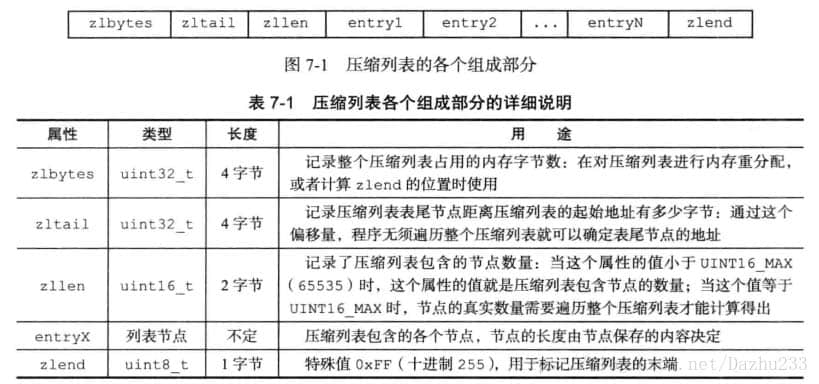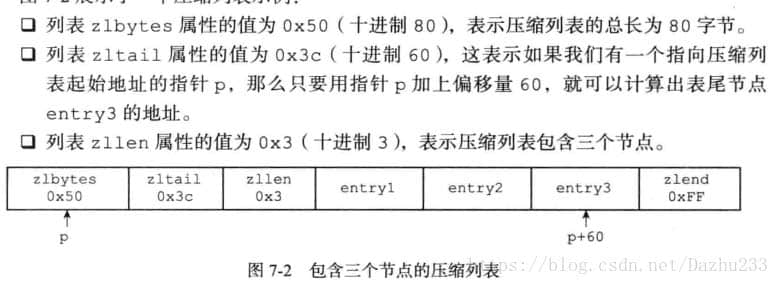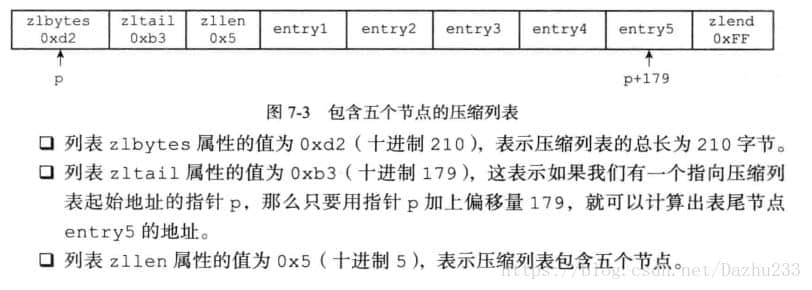背景
Redis缓存的字符串过大时会有问题。不超过10KB最好,最大不能超过1MB。
有几个配置缓存,上千个flink任务调用,每个任务5分钟命中一次,大小在5KB到6MB不等,因此需要压缩。
第一种,使用gzip
/**
* 使用gzip压缩字符串
*/
public static String compress(String str) {
if (str == null || str.length() == 0) {
return str;
}
ByteArrayOutputStream out = new ByteArrayOutputStream();
GZIPOutputStream gzip = null;
try {
gzip = new GZIPOutputStream(out);
gzip.write(str.getBytes());
} catch (IOException e) {
e.printStackTrace();
} finally {
if (gzip != null) {
try {
gzip.close();
} catch (IOException e) {
e.printStackTrace();
}
}
}
return new sun.misc.BASE64Encoder().encode(out.toByteArray());
}
/**
* 使用gzip解压缩
*/
public static String uncompress(String compressedStr) {
if (compressedStr == null || compressedStr.length() == 0) {
return compressedStr;
}
ByteArrayOutputStream out = new ByteArrayOutputStream();
ByteArrayInputStream in = null;
GZIPInputStream ginzip = null;
byte[] compressed = null;
String decompressed = null;
try {
compressed = new sun.misc.BASE64Decoder().decodeBuffer(compressedStr);
in = new ByteArrayInputStream(compressed);
ginzip = new GZIPInputStream(in);
byte[] buffer = new byte[1024];
int offset = -1;
while ((offset = ginzip.read(buffer)) != -1) {
out.write(buffer, 0, offset);
}
decompressed = out.toString();
} catch (IOException e) {
e.printStackTrace();
} finally {
if (ginzip != null) {
try {
ginzip.close();
} catch (IOException e) {
}
}
if (in != null) {
try {
in.close();
} catch (IOException e) {
}
}
if (out != null) {
try {
out.close();
} catch (IOException e) {
}
}
}
return decompressed;
}
第二种,使用Zstd
<!-- https://mvnrepository.com/artifact/com.github.luben/zstd-jni -->
<dependency>
<groupId>com.github.luben</groupId>
<artifactId>zstd-jni</artifactId>
<version>1.4.5-6</version>
</dependency>
public class ConfigCacheUtil {
private static ZstdDictCompress compressDict;
private static ZstdDictDecompress decompressDict;
private static final Integer LEVEL = 5;
public static void train() throws IOException {
// 初始化词典对象
String dictContent = FileUtils.readFileToString(new File("/Users/yangguang/vscode/text/cache.json"),
StandardCharsets.UTF_8);
byte[] dictBytes = dictContent.getBytes(StandardCharsets.UTF_8);
compressDict = new ZstdDictCompress(dictBytes, LEVEL);
decompressDict = new ZstdDictDecompress(dictBytes);
}
public static void main(String[] args) throws IOException {
String read = FileUtils.readFileToString(new File("/Users/yangguang/vscode/text/cache.json"));
ConfigCacheUtil.testGzip(read);
System.out.println("");
ConfigCacheUtil.test(read.getBytes());
System.out.println("");
ConfigCacheUtil.testByTrain(read.getBytes());
}
public static void testGzip(String str) {
logger.info("初始数据: {}", str.length());
// 压缩数据
long compressBeginTime = System.currentTimeMillis();
String compressed = ConfigCacheUtil.compress(str);
long compressEndTime = System.currentTimeMillis();
logger.info("压缩耗时: {}", compressEndTime - compressBeginTime);
logger.info("数据大小: {}", compressed.length());
// 解压数据
long decompressBeginTime = System.currentTimeMillis();
// 第 3 个参数不能小于解压后的字节数组的大小
String decompressed = ConfigCacheUtil.uncompress(compressed);
long decompressEndTime = System.currentTimeMillis();
logger.info("解压耗时: {}", decompressEndTime - decompressBeginTime);
logger.info("数据大小: {}", decompressed.length());
}
public static void test(byte[] bytes) {
logger.info("初始数据: {}", bytes.length);
// 压缩数据
long compressBeginTime = System.currentTimeMillis();
byte[] compressed = Zstd.compress(bytes);
long compressEndTime = System.currentTimeMillis();
logger.info("压缩耗时: {}", compressEndTime - compressBeginTime);
logger.info("数据大小: {}", compressed.length);
// 解压数据
long decompressBeginTime = System.currentTimeMillis();
// 第 3 个参数不能小于解压后的字节数组的大小
byte[] decompressed = Zstd.decompress(compressed, 20 * 1024 * 1024 * 8);
long decompressEndTime = System.currentTimeMillis();
logger.info("解压耗时: {}", decompressEndTime - decompressBeginTime);
logger.info("数据大小: {}", decompressed.length);
}
public static void testByTrain(byte[] bytes) throws IOException {
ConfigCacheUtil.train();
logger.info("初始数据: {}", bytes.length);
// 压缩数据
long compressBeginTime = System.currentTimeMillis();
byte[] compressed = Zstd.compress(bytes, compressDict);
long compressEndTime = System.currentTimeMillis();
logger.info("压缩耗时: {}", compressEndTime - compressBeginTime);
logger.info("数据大小: {}", compressed.length);
// 解压数据
long decompressBeginTime = System.currentTimeMillis();
// 第 3 个参数不能小于解压后的字节数组的大小
byte[] decompressed = Zstd.decompress(compressed, decompressDict, 20 * 1024 * 1024 * 8);
long decompressEndTime = System.currentTimeMillis();
logger.info("解压耗时: {}", decompressEndTime - decompressBeginTime);
logger.info("数据大小: {}", decompressed.length);
compressDict.toString();
}
}
输出
5KB
2020-09-08 22:42:48 INFO ConfigCacheUtil:157 - 初始数据: 5541 2020-09-08 22:42:48 INFO ConfigCacheUtil:163 - 压缩耗时: 2 2020-09-08 22:42:48 INFO ConfigCacheUtil:164 - 数据大小: 1236 2020-09-08 22:42:48 INFO ConfigCacheUtil:171 - 解压耗时: 2 2020-09-08 22:42:48 INFO ConfigCacheUtil:172 - 数据大小: 5541
2020-09-08 22:42:48 INFO ConfigCacheUtil:176 - 初始数据: 5541 2020-09-08 22:42:48 INFO ConfigCacheUtil:182 - 压缩耗时: 523 2020-09-08 22:42:48 INFO ConfigCacheUtil:183 - 数据大小: 972 2020-09-08 22:42:48 INFO ConfigCacheUtil:190 - 解压耗时: 85 2020-09-08 22:42:48 INFO ConfigCacheUtil:191 - 数据大小: 5541
2020-09-08 22:42:48 INFO ConfigCacheUtil:196 - 初始数据: 5541 2020-09-08 22:42:48 INFO ConfigCacheUtil:202 - 压缩耗时: 1 2020-09-08 22:42:48 INFO ConfigCacheUtil:203 - 数据大小: 919 2020-09-08 22:42:48 INFO ConfigCacheUtil:210 - 解压耗时: 22 2020-09-08 22:42:48 INFO ConfigCacheUtil:211 - 数据大小: 5541
6MB
2020-09-08 22:44:06 INFO ConfigCacheUtil:158 - 初始数据: 5719269 2020-09-08 22:44:06 INFO ConfigCacheUtil:164 - 压缩耗时: 129 2020-09-08 22:44:06 INFO ConfigCacheUtil:165 - 数据大小: 330090 2020-09-08 22:44:06 INFO ConfigCacheUtil:172 - 解压耗时: 69 2020-09-08 22:44:06 INFO ConfigCacheUtil:173 - 数据大小: 5719269
2020-09-08 22:44:06 INFO ConfigCacheUtil:177 - 初始数据: 5874139 2020-09-08 22:44:06 INFO ConfigCacheUtil:183 - 压缩耗时: 265 2020-09-08 22:44:06 INFO ConfigCacheUtil:184 - 数据大小: 201722 2020-09-08 22:44:06 INFO ConfigCacheUtil:191 - 解压耗时: 81 2020-09-08 22:44:06 INFO ConfigCacheUtil:192 - 数据大小: 5874139
2020-09-08 22:44:06 INFO ConfigCacheUtil:197 - 初始数据: 5874139 2020-09-08 22:44:06 INFO ConfigCacheUtil:203 - 压缩耗时: 42 2020-09-08 22:44:06 INFO ConfigCacheUtil:204 - 数据大小: 115423 2020-09-08 22:44:07 INFO ConfigCacheUtil:211 - 解压耗时: 49 2020-09-08 22:44:07 INFO ConfigCacheUtil:212 - 数据大小: 5874139
Redis 压缩列表
压缩列表(ziplist)是列表键和哈希键的底层实现之一。当一个列表键只包含少量列表项,并且每个列表项要么就是小整数值,要么就是长度比较短的字符串,Redis就会使用压缩列表来做列表键的底层实现。
下面看一下压缩列表实现的列表键:

列表键里面包含的都是1、3、5、10086这样的小整数值,以及''hello''、''world''这样的短字符串。
再看一下压缩列表实现的哈希键:

压缩列表是Redis为了节约内存而开发的,是一系列特殊编码的连续内存块组成的顺序型数据结构。
一个压缩列表可以包含任意多个节点,每个节点可以保存一个字节数组或者一个整数值。

看一下压缩列表的示例:

看一下包含五个节点的压缩列表:

节点的encoding属性记录了节点的content属性所保存数据的类型以及长度。
节点的content属性负责保存节点的值,节点值可以是一个字节数组或者整数,值的类型和长度由节点的encoding属性决定。

连锁更新:
每个节点的previous_entry_length属性都记录了前一个节点的长度,那么当前一个节点的长度从254以下变成254以上时,本节点的存储前一个节点的长度的previous_entry_length就需要从1字节变为5字节。
那么后面的节点的previous_entry_length属性也有可能更新。不过连锁更新的几率并不大。
总结:

以上为个人经验,希望能给大家一个参考,也希望大家多多支持。
